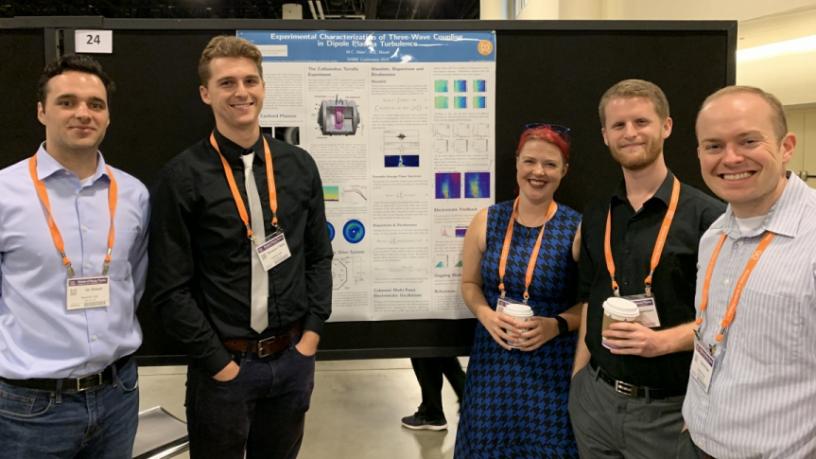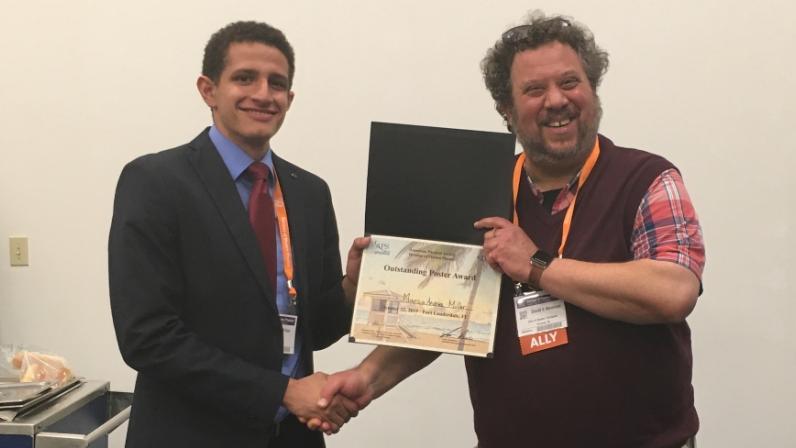Columbia Researchers Attend Annual Meeting of the APS Division of Plasma Physics
Students, scientists, and faculty presented their research at the 61st Annual Meeting of the APS Division of Plasma Physics, October 21-25, 2019. This year's meeting was located in Fort Lauderdale, Florida, where over 2,500 scientists from around the world gathered to present and learn the latest research in plasma physics and fusion science.
A highlight of the meeting was Dr. Andrea Garofalo (PhD Columbia 1997) who presented the opening plenary lecture titled "Understanding the MHD challenges for ITER Q=10 operation at reactor relevant conditions." Andrea Garofalo reported the recent discovery how controlling the outer shape of the toroidally-confined plasma increases the expected fusion power output from ITER, the world's largest experiment.
Another highlight was the presentation by Marco Andres Miller (APAM 2020) who presented his summer research results in collaboration with the Princeton Plasma Physics Laboratory. The title of Marco's presentation was "A machine learning algorithm for the nonlinear Fokker-Planck-Landau collision operator in XGC." Marco showed how to use machine learning to create a fast and efficient computer simulation of plasma collisions for fusion experiments. More than 100 undergraduate students presented their research at the APS Meeting, and Marco Andres Miller was awarded a "Best Undergraduate Poster Award" from Prof. David Newman (Univ Alaska) and chair of the APS Division of Plasma Physics.
Many other students and scientists presented their research results. These include: Todd Elder "Magnetic nulls in interacting dipolar fields", Mel Abler "Experimental Characterization of Three-Wave Coupling in Dipole Plasma Turbulence", Ian Stewart "Investigation of turbulence and fast rotating MHD during biased H-mode on HBT-EP", Alex Saperstein "Characterizations of Scrape-Off-Layer Currents on HBT-EP Using Movable, Current Sensing Tiles", Yumui "William" Wei "High Speed Videography on Plasma Periphery in HBT-EP", Boting Li "Tangential Extreme Ultraviolet and Soft X-Ray (EUV/SXR) Diagnostic System on the HBT-EP Tokamak", John Brooks "Mode suppression in HBT-EP using active feedback and a quadrature bias probe array", and Dr. Jeff Levesque "Active Control of Kink Modes Using a Non-magnetic, Extreme Ultraviolet Sensor Array".

(left-right): Ian Stewart, Alex Battey, Mel Abler, Alex Saperstein, and Todd Elder

left-right: Marco Andres Miller and Prof. David Newman
